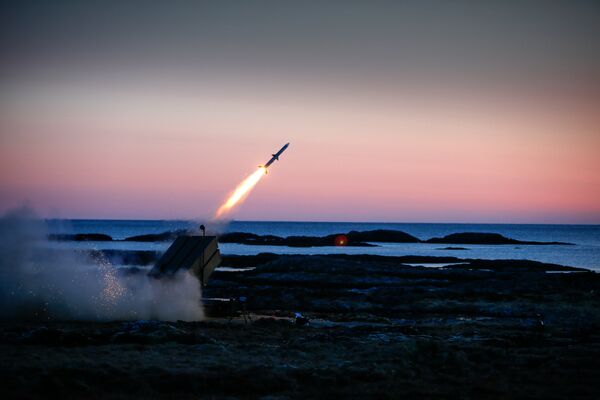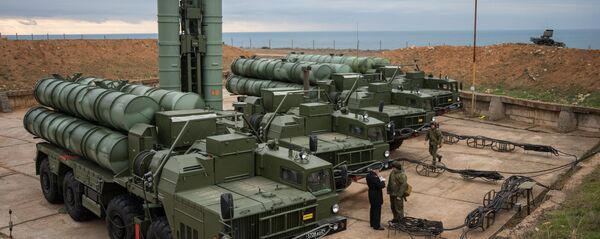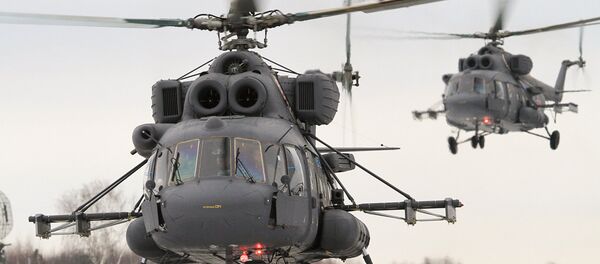The US Congress has granted India a waiver against the anti-Russian sanctions thereby paving the way for New Delhi's acquisition of the Russian-made S-400 Triumf air defense system. India concluded an intergovernmental agreement with Russia for the purchase of the S-400s in 2016, following China's decision to buy the missile defense system in 2015. Moscow has delivered all the necessary components to Beijing for China's first S-400 system regiment.
Besides this, on July 30, Russian Deputy Prime Minister Yury Borisov told reporters that Russia's Project 22800 (codenamed Karakut) corvettes equipped with Kalibr missiles could be marketed to India, China and Vietnam. The family of Russian-made Kalibr anti-ship cruise missiles boasts an operational range of up to 2,500 kilometers (1,553 miles).
READ MORE: New US Bill May Help India Buy Russian Arms Without Being Sanctioned — Reports
Meanwhile, on July 31, Defense News reported citing an Indian Ministry of Defense official that New Delhi had approved the procurement of the National Advanced Surface-to-Air Missile System-II (NASAMS-II), built by Norway's Kongsberg Defense and Aerospace and the US' Raytheon National, through a government-to-government deal with Washington.
Sputnik reached out to Amrita Dhillon, a foreign affairs analyst and founding editor of New Delhi-based Kootneeti magazine, and retired Maj. Gen. Rajiv Narayanan, former Additional Director General Military Operation (2016), asking them to comment on these developments.
Sputnik: What's your take on Deputy Prime Minister Borisov's statement regarding the potential delivery of Project 22800 corvettes armed with Kalibr missiles to Asia-Pacific nations, including India, China, and Vietnam? Is India interested in boosting its naval prowess? What challenges does India face at sea?
Amrita Dhillon: India and Russia are natural allies and have been so for decades. While keeping its national interest as priority India will be happy to upgrade the currently operational version of the 3M-54E Kalibr (Club) which is just under the 300-km range, to the 2,500-km range. However, it will be interesting to see how Russia will manage to avoid violating the MTCR (Missile Technology Control Regime). Other than India, the rest of the countries mentioned by Deputy Prime Minister Borisov are not members of the MTCR agreement.
As India is surrounded by water on three sides, it has a high risk of maritime terrorism, piracy and growing skirmishes for power in the Indian Ocean due to the [China-led] Belt and Road project. Absolutely, India will be boosting its strategy in the Indian Ocean region.

Sputnik: Is India's decision to speed up the acquisition of Russia's S-400 missile defense system in any way connected with the fact that China has previously bought this air defense system from Russia? Is there any military competition between Beijing and New Delhi?
Maj. Gen. Narayanan: India's procurement of weapons and equipment is independent of other country's acquisitions and are based on our own needs. It should be noted that Russia did not offer this system for export for a few years after it was operationalized in 2007. When it was offered in 2014-2015, both India and China were willing to buy this "state-of-the-art" air-defense system that has a capacity to target a wide range of aerial targets covering a range from 400 km to 40 km.
The procurement processes of India and China are drastically different due to the differing systems of government. Hence China could sign a contract in 2015 and receive its deliveries now. Hopefully, India will sign a contract this October during the annual India-Russia Summit.
READ MORE: US Exempts India From Sanctions Over Purchase of Russian S-400s — Reports

Sputnik: Has the decision regarding the purchase of the National Advanced Surface to Air Missile System-II (NASAMS-II) by New Delhi marked some sort of compromise between the US and India after the procurement of the S-400? What's behind India's diversification of military imports?
Maj. Gen. Narayanan: The NASAMS-II is a Norwegian Medium Range Air Defense System (25 km — 180 km) and would form part of the overall Air-Defense Grid. Any Air-Defense Envelope consists of integrated multiple layers of protection for vital areas and points. It starts from very long-range (over 300 km) and ends at very short-range (2 — 5 km).
India is concurrently progressing with its own domestic ballistic missile defense system, which when operationalized would add to this grid and complement these systems.
Maj. Gen. Rajiv Narayanan, AVSM, VSM, retired after 37 years of distinguished service, as the Additional Director General Military Operation in 2016, having been closely involved with Future Strategy, Force Structures, and Force Modernization.
Amrita Dhillon is the Founding Editor of The Kootneeti, a New Delhi-headquartered multilingual publication on International Relations & Diplomacy.
Views and opinions expressed in this article are those of the experts and do not necessarily reflect those of Sputnik.




